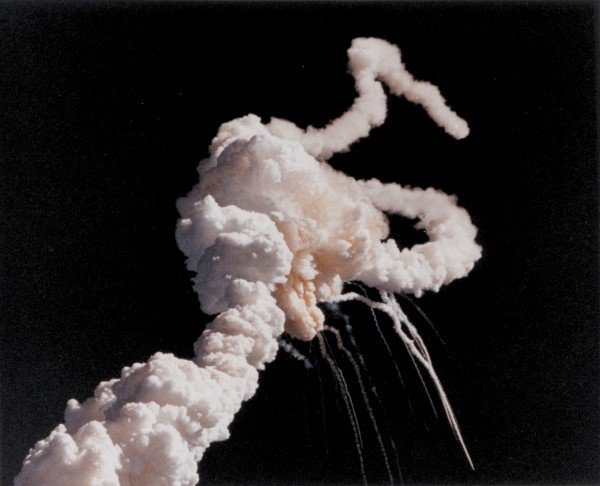 In his second blog for The New Rules of Safety, Andrew Sharman explains how a chance meeting on an aeroplane led to a reflection of the culture at NASA when the challenger exploded 30 years ago, and where a culture of risk wasn’t fully understood by the leaders.
In his second blog for The New Rules of Safety, Andrew Sharman explains how a chance meeting on an aeroplane led to a reflection of the culture at NASA when the challenger exploded 30 years ago, and where a culture of risk wasn’t fully understood by the leaders.
Long haul flights are always interesting. I typically use the time to catch up on emails and paperwork, or sometimes just to kick back and watch a movie and enjoy a bit of R&R. They’re also useful opportunities to have a good old think.
As I boarded a flight from Johannesburg to Geneva on the 29th January I found myself sitting next to an affable American chap. Over our ‘Welcome on board’ glass of wine we made introductions. When I mentioned that I worked in safety my neighbor replied ‘Ah, interesting, I used to work for NASA and safety sure was an issue there!’
We enjoyed some robust discussion over our wine, and then each retired to our movie choices. But my mind was reflecting on our chat – and the eight days of safety leadership training I’d delivered for a major African construction company where we’d been exploring the challenges of aligning perspectives on risk and leading safety positively.
In fact, almost 30 years to the day of my flight home, over on the other side of the world, others had been thinking about similar things. On 28th January 1986, the United States Challenger Space Shuttle exploded just 73 seconds after take off, claiming the lives of all 7 members of its crew. Following my close encounter on the plane, my interest in NASA piqued and in reading several of the disaster reports from Challenger over the last few days, I notice some points worth reflecting:
First, it seems that the culture at NASA was one where risk was not fully understood by the leaders. In fact, much of the logic and reasoning about risk at NASA took the form that if something bad hadn’t happened yet, then it probably wouldn’t happen. An over-inflated sense of confidence – driven by seemingly positive data (no previous failures in the case of NASA’s Challenger) – was at play. In our Total Safety Leadership masterclasses we explore the role of subjectivity and the little mental shortcuts known as heuristics that can trick us into making bad decisions from the data we gather. As the Challenger disaster illustrated, we can’t measure safety by the absence of accidents.
Second, a desire to be innovative and productive obscured some of the realities of what was happening in the workplace. In the ‘race for space’ between the Soviet Union and America the pressure to ‘be the best’ was so intense that discussions on risk often took a backseat at NASA. And when safety was discussed, there was huge variation between the views of leaders and workers. As an example, prior to Challenger’s launch, engineers on the ground put the likelihood of disaster at 1 in 100. Leaders dismissed this, concluding that the chance was at around 1 in 100,000.
In our safety leadership workshops we like to run real-time experiments where we use activities like base jumping, riding a bike, and sitting on a beach to understand how people make judgements on risk. Each time, where delegates had experience of a particular activity, their ability as a class in aligning risk ratings was greater. When we understand risk from our own experiences we have a different view. So it stands to reason that the NASA engineers, more familiar with the work activities than the leaders, had a more informed sense of risk, doesn’t it?
So what can we learn from the tragedy that was Challenger? Well, you already know the answers to my question I’m sure. As leaders we can dig deeper into the safety risks we face in the workplace, be mindful of the shortcuts our brains try to take when we’re under pressure, we can engage more fully with the people actually doing the work to explore their views on safety hazards and risk, and we can recognise and thank them when working safely.
You’ll make a giant leap closer to safety excellence and there’s no need to have a space shuttle to get you there.
Andrew Sharman is Chief Executive of RyderMarshSharman, a global consultancy specializing in organizational culture and leadership.
Learn more about heuristics and human behaviour with Andrew’s best-selling book From Accidents to Zero: A Practical Guide to Improving Your Workplace Safety Culture. It’s available to SHPonline readers with an exclusive 50% discount if ordered before 28 February. Use the code SHP50 at www.fromaccidentstozero.com to order your copy now.
The Safety Conversation Podcast: Listen now!
The Safety Conversation with SHP (previously the Safety and Health Podcast) aims to bring you the latest news, insights and legislation updates in the form of interviews, discussions and panel debates from leading figures within the profession.
Find us on Apple Podcasts, Spotify and Google Podcasts, subscribe and join the conversation today!


